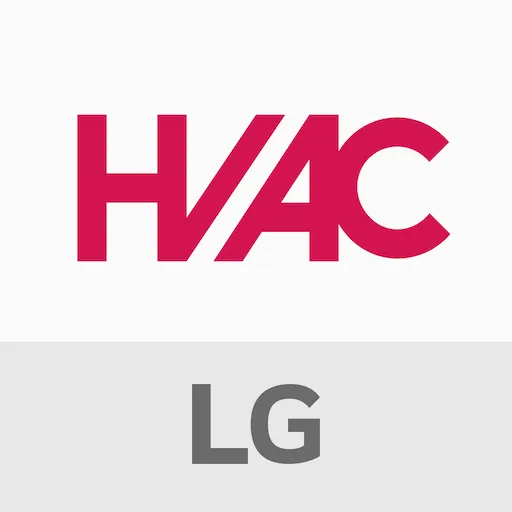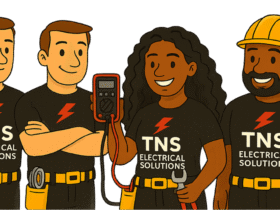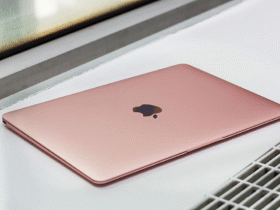Variable Refrigerant Flow (VRF) is a sophisticated HVAC technology that enables the precise control of temperature in multiple zones within a building using a single system. Originating in Japan in the 1980s, VRF systems have gained widespread global popularity due to their efficiency and versatility. At the heart of VRF technology is its ability to control the amount of refrigerant flowing to each zone, adapting to the specific cooling or heating demands of that area.
Unlike traditional centralized systems that rely on a constant flow of refrigerant and often lead to energy wastage, VRF systems adjust the refrigerant flow based on real-time requirements, thereby significantly reducing energy consumption. This is achieved through sophisticated controls and multiple indoor units, allowing for the modulation of refrigerant volume precisely.
The VRF systems comprise outdoor units which are connected to a series of indoor units. The outdoor units contain compressors that are capable of modulating their output to match the needs of the indoor units. This modulation is usually done via inverter-driven compressors, which vary the speed of the compressor to control refrigerant flow. These indoor units can be ducted or ductless, providing flexibility in terms of installation and aesthetics.
VRF technology stands out for its minimal ductwork, reduced noise levels, and ease of installation and maintenance. It’s particularly attractive for retrofitting older buildings where extensive ductwork might be invasive or impractical. The system’s design permits a small footprint, making it ideal for spaces where traditional HVAC equipment cannot fit. Overall, VRF presents a modern solution for dynamic and efficient climate control in various building environments.
The Advantages of VRF Systems for Energy-Efficient Climate Control
Variable Refrigerant Flow (VRF) systems represent a significant innovation in energy-efficient climate control for both commercial and residential buildings. These systems operate under a simple yet ingenious principle: by varying the flow of refrigerant to multiple indoor units, they can simultaneously meet diverse comfort requirements across different zones or rooms. This adaptability results in several notable advantages in terms of energy efficiency.
Firstly, the inherent design of VRF technology allows for precise temperature control. By using inverter compressors, VRF units adjust the refrigerant volume flowing to each zone, which eliminates the common on-and-off cycling of traditional HVAC systems and thus reduces energy consumption. Temperature adjustments happen smoothly and continuously, ensuring that energy isn’t wasted on excessive cooling or heating.
Secondly, VRF systems recuperate energy within the system. In instances where simultaneous heating and cooling are required across different zones, the system can transfer heat from areas that need cooling to those that require heating, maximizing energy reuse and minimizing the need for additional energy input.
VRF technology also significantly contributes to overall building energy efficiency since these systems have the ability to operate at varying capacities. This means they draw only the amount of energy that is needed at any given time, making them remarkably energy-effective compared to traditional systems that operate at full capacity regardless of the demand.
Lastly, with VRF systems, energy losses typically associated with ductwork are greatly reduced or eliminated altogether because these systems can be designed with minimal or no ducting. This feature is particularly beneficial in retrofit applications or buildings where implementing extensive ductwork is impractical or impossible.
In essence, the use of VRF systems for climate control stands as a landmark in achieving energy conservation objectives, providing a comfortable environment for occupants, and reducing operational costs through intelligent, demand-driven operation.
Exploring the Various Applications of VRF in Commercial and Residential Buildings
Variable Refrigerant Flow (VRF) technology is increasingly being applied in a wide range of buildings due to its flexibility, efficiency, and scalability. In the commercial sector, VRF systems are commonly found in office buildings, where they can accommodate the varying heating and cooling needs of different offices, conference rooms, and common areas. The adaptability of VRF makes it an ideal choice for retail spaces as well, where comfort is paramount to enhance the customer experience, and the cooling and heating loads may fluctuate significantly throughout the day.
Educational institutions and healthcare facilities also benefit from VRF technology. School classrooms have variable occupancy and thus varying cooling and heating needs throughout the day. VRF systems allow for individual control of each space, providing a comfortable learning environment. Hospitals and clinics, with their strict climate control requirements for different zones such as patient rooms, operating theatres, and waiting areas, can leverage VRF for precise temperature management.
In the residential domain, VRF systems are gaining ground in multi-family housing units, such as apartments and condominiums, where they offer individual comfort control for residents while maintaining overall energy efficiency for the entire building. Luxury residences, too, appreciate the quiet operation and space-saving characteristics of VRF systems.
By enabling personalized climate control for diverse spaces within a building, VRF systems provide a versatile solution that can be tailored to meet the unique heating and cooling demands of various types of commercial and residential structures.
How VRF Systems Contribute to Customized Comfort and Zoning Solutions
Variable Refrigerant Flow (VRF) systems have revolutionized the concept of climate control within buildings by offering unprecedented customization and zoning capabilities. The essence of VRF technology lies in its ability to control the amount of refrigerant flowing to each of the system’s multiple indoor units. This ingenious principal allows VRF systems to provide precise thermal comfort to individual zones or rooms within a commercial or residential building.
One of the standout features of VRF systems is their ability to offer simultaneous heating and cooling in different zones. This means that while one part of the building requires cooling, another area can be heated using the same system. Each indoor unit operates independently, ensuring that specific temperature preferences are met without affecting the comfort of other areas. This not only enhances personal comfort for occupants but also adapts to the varying usage patterns of different rooms, such as sunny areas needing more cooling or rarely used spaces requiring less heating.
Moreover, VRF systems can adapt to the changing needs throughout the day. For instance, as the sun shifts and affects different parts of a building, VRF systems can respond accordingly, increasing or decreasing cooling or heating to maintain a constant, comfortable environment. These zoning solutions also cater to the diverse requirements of different spaces—for example, server rooms that need constant cooling or conference areas that may have a large influx of people at certain times.
By providing such individualized temperature control, VRF systems not only enhance comfort for occupants but also significantly reduce energy waste. As a result, they stand out as a preferred solution for creating sophisticated and energy-efficient zoned heating and cooling strategies in modern buildings.
Integration of VRF with Smart Building Systems for Enhanced Control
Variable Refrigerant Flow (VRF) systems are being increasingly integrated with smart building management systems (BMS), offering a sophisticated approach to heating, ventilation, and air conditioning (HVAC) control and monitoring. By connecting VRF systems to a building’s central control, building operators can manage various environmental parameters with unprecedented precision and ease.
The amalgamation of VRF technology into smart building systems enables real-time data collection and analysis, allowing for automated adjustments to indoor climate conditions. Sensors distributed throughout the building gather information on temperature, humidity, occupancy, and even air quality, which the BMS then uses to instruct the VRF system to modulate refrigerant flow accordingly. This synergy ensures optimal comfort for occupants while keeping energy consumption at a minimum.
Moreover, smart integration facilitates fault detection and diagnostics. The system can alert facility managers to issues with the VRF equipment, often before occupants become aware of any discomfort. By providing early warnings of potential malfunctions, maintenance can be proactively scheduled, thus avoiding system downtime.
Smart BMS platforms also offer remote access capabilities, meaning that HVAC systems can be monitored and controlled remotely via smartphones or computers. This feature is particularly beneficial for large or multiple buildings, simplifying management and enabling immediate responses to changing conditions or emergencies.
As smart technologies evolve, the integration of VRF systems with BMS is set to become more advanced, with potential for artificial intelligence (AI) algorithms to further optimize energy efficiency and comfort levels. The result is a future where buildings not only react to internal and external stimuli but also anticipate needs, paving the way toward truly intelligent and sustainable building environments.
The Future of Heating and Cooling: VRF’s Role in Sustainable Building Design
The Variable Refrigerant Flow (VRF) technology is set to play a pivotal role in the evolution of sustainable building design, aligning with global efforts to reduce energy consumption and greenhouse gas emissions. As we venture into a future where environmental responsibility dominates the construction and HVAC industries, VRF systems are emerging as a preferred solution due to their high efficiency and adaptability in a wide range of building types.
VRF systems offer precise temperature control and the ability to operate at varying capacities, which means they consume only the amount of energy necessary to maintain desired comfort levels. This translates to reduced energy waste and lower operating costs, making VRF technology a cornerstone in the development of green buildings that aim for certifications like LEED and BREEAM.
Moreover, the integration of VRF systems with renewable energy sources, such as solar power, paves the way for net-zero energy buildings. By running on electricity that can be generated from renewables, VRF systems drastically cut down on fossil fuel dependency, further minimizing a building’s carbon footprint.
Building automation systems (BAS) are becoming increasingly sophisticated, and when VRF technology is integrated with these smart systems, the result is a harmonic symphony of energy efficiency, occupant comfort, and seamless control. Advanced sensors, IoT devices, and analytics enable the VRF systems to adapt to changing conditions in real-time, optimizing performance, and contributing to the building’s overall sustainability goals.
As we look to the future, the modular nature of VRF systems, along with their scalability and ease of installation, will continue to influence building designs, promoting energy conservation, and facilitating the creation of flexible spaces that can adapt to the changing needs of occupants without compromising on efficiency or comfort. The adoption of VRF technology is not just a trend; it is a stride toward a more sustainable and environmentally-conscious world.















Leave a Reply